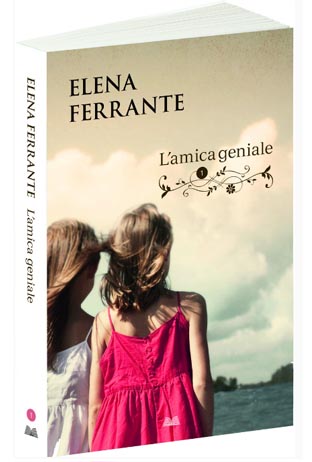
La scorsa settimana ho assistito, presso l’Istituto Italiano di San Francisco, ad una mostra fotografica con le foto di Napoli scattate da Flavia Loreto. La serata è stata ospitata da quattro donne che hanno condiviso i loro pensieri circa I romanzi di Elena Ferrante che si svolgono a Napoli.
Last week I attended the Istituto Italiano in San Francisco, a photography show featuring photos of Naples taken by Flavia Loreto. The evening was hosted by four women who also shared their thoughts about Elena Ferrante’s novels also set in Napoli.
I romanzi napoletani di Elena Ferrante hanno preso d’assalto il mondo e sono stati tradotti in inglese, olandese, francese, Tedesco e spagnolo, e tante altre lingue. Ferrante una figura controversa perché preferisce mantenere la sua vera identità segreta, è emersa come uno dei più influenti e più letti degli autori italiani in questi ultimi anni, catapultando la scrittrice ad una notevole notorietà in tutto il mondo.
Elena Ferrante’s Neapolitan novels have taken the world by storm, translated into English, Dutch, French, German, and Spanish, and many other languages. Ferrante a controversial figure because she prefers to keep her true identity undisclosed, has emerged as one of the most influential and well-read Italian authors in recent years, thus catapulting her to considerable notoriety worldwide.
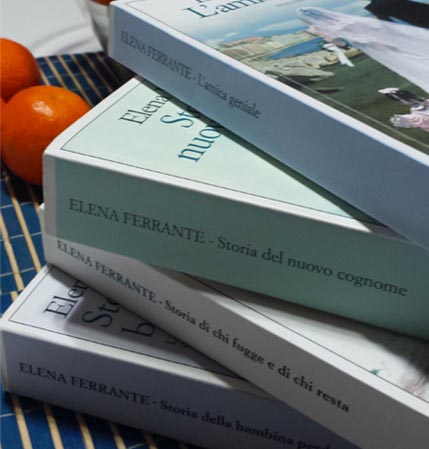
Napoli ha sempre occupato un posto speciale nell’immaginario letterario: da Goethe a Stendhal, Leopardi e Neruda, innumerevoli sono gli scrittori che ne hanno subito il fascino. Più di recente Ferrante ha catturato il mosaico di emozioni intensi e dissonanti, così come le forze creative e distruttive nella vita di due ragazze percettive e intelligenti – Lila ed Elena.
Napoli has occupied a special place in literature: Goethe, Stendhal, Leopardi, and Neruda, many writers who have been fascinated by the city. More recently Ferrante has captured the mosaic of intense and dissonant emotions as well as the creative and destructive forces in the lives of two perceptive and intelligent girls – Lila and Elena.
Avevo acquistato “L’amica geniale” il primo libro nel quartetto, il settembre scorso, quando ero ad Arezzo. L’esperienza di leggere Ferrante nel suo italiano originale è stata bella. Con tutto la pubblicità sui libri, non ero sicura di quello che avrei trovato. Tuttavia dopo aver letto la prima pagina, sono stata trasportata nel mondo di Ferrante – un rione italiano del 1950.
I had purchased “My Brilliant Friend” the first book in the quartette last September when I was in Arezzo. The was a lovely experience reading Ferrante’s work in its original Italian With all the hype about the books, I wasn’t sure exactly what I would discover. But after reading the first page, I was pulled into Ferrante’s world — an Italian riune in the 1950s. A riune can be equated to the projects of a poor working neighborhood.
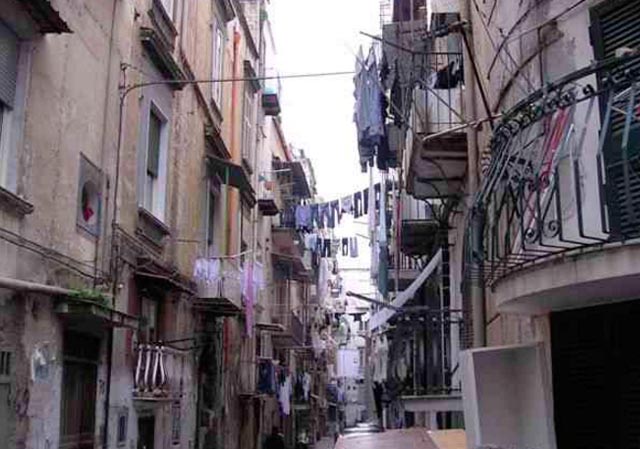
Quello che mi ha catturata subito è stato il rapporto complicato e intenso che si sviluppa tra Lila e Elena. Le due ragazze sono amici d’infanzia, e le loro vite sono interconnesse in un modo importante. Come un’altalena, i rapport di forza e chi ha sopravvento si spostano costantemente avanti e indietro tra di loro. La loro storia è una delle emozioni aggrovigliate e racconta di come tentano di sopravvivere e avere successo in un mondo dominato dagli uomini.
What captured me immediately was the complicated and intense relationship that develops between Lila and Elena. The two girls are childhood friends, and their lives are interconnected in an important way. Like a swing, the balance of power and who has the upper hand is constantly shifting back and forth between them. Their story is one of the tangled emotions and tells of how they attempt to survive and succeed in a male-dominated world.
Durante la serata a San Francisco, è stato interessante ascoltare Sara Marinella, una professoressa presso l’Università di San Francisco. Lei è anche una donna napoletana. C’erano altre donne originarie di Napoli nella folla e tutte erano fermamente d’accordo che Ferrante ha catturato l’essenza e l’esperienza di essere una donna in questa città. Per loro, è stato un richiamo viscerale, commovente e spesso doloroso. Sono tutte orgogliose di essere originarie di Napoli, e tuttavia come la protagonista Elena, per avere successo e per prosperare hanno trovato necessario lasciare la città della loro nascita. Eppure, mai si dimenticano di Napoli. Parlano delle loro radici napoletane con orgoglio e affetto, nonostante il lato oscuro della città.
During my evening in San Francisco, it was interesting to listen to Sara Marinelli, a professor at the University of San Francisco. She is also a Neopolitan woman. There were a number of other women from Naples in the crowd, who all were very adamant that this author has captured the essence of what it is like to be a woman in this city. For them, it was a visceral, moving, and often painful reminder of the city where they were born. They are all proud to be from Naples, and yet like the protagonist Elena, to succeed and prosper they have found it necessary to leave the city of their birth. Yet, never do they forget Naples. They speak of it and their Neapolitan roots with loving pride, despite the city’s dark side.
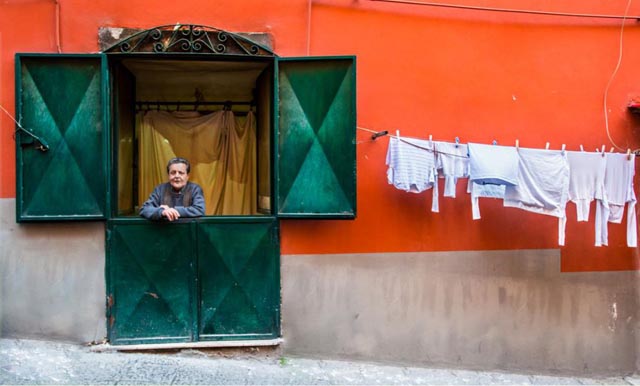
Un’altra cosa interessante, e di cui le donne hanno parlato, è la storia che Ferrante scrive, mentre è caricata da emozioni complicate, lei raramente fornisce lunghe descrizioni colorate di Napoli. Credo che la mancanza di dettagli descrittivi sia la ragione per cui alcune persone trovano i libri di Ferrante difficili da leggere. Io stessa mi piacciono ricche descrizioni colorate che aiutano ad immaginare la scena e l’ambientazione e l’ho trovato stranamente mancante.
Another interesting thing, which the panel of speakers talked about, was although Ferrante charges her story with complicated human emotions, she rarely provides colorful, lengthy descriptions of Naples itself. I think, her lack of descriptive detail, is the reason that some people find Ferrante’s books hard to read. I myself also enjoy rich colorful descriptions that help envision the scene and the setting and found it curiously missing.
Forse è stata una decisione precisa della scrittrice di non darci lunghe descrizione vivide delle case in cui i personaggi vivono o sul mare e la città. Invece la narrazione è tetra e priva di dettagli eccessivi. In questo modo, Ferrante è in grado di concentrarsi più direttamente sul rapporto tra le ragazze e coloro che le circondano. Invece di descrivere la città e il luogo attraverso le sue parole, Napoli è descritta per noi attraverso le emozioni e le esperienze dei due personaggi principali, Lila ed Elena.
Perhaps it is a conscientious decision by the author not to give the reader descriptions of the houses in which the characters live or vivid descriptive accounts of the sea or the city. Instead narrative is bleak and devoid of excessive detail. Perhaps in this way, Ferrante is better able to focus more directly on the girl’s relationship and those around them. Rather than describe the city and the place through her words, it is described for us through the emotions and experiences of the two main characters, Lila and Elena.
Non vedo l’ora di leggere il prossimo libro nella serie per scoprire che tipo di donne Lila e Elena diventano. E voi? Quali sono le vostre opinione? Avete letto i libri della Ferrante? Vi sono piaciuti?
I look forward to reading the next in the series to find out what kind of women Lila and Elena become. What about all of you? What are your thoughts? Have you read Ferrante’s books. Did you enjoy them? Please leave your thoughts and comments!
If you liked this post about Italian authors and literature you might like this one too:
Sfuggire la peste! Sfuggire la peste! Escape the Black Death with Boccaccio in Fiesole

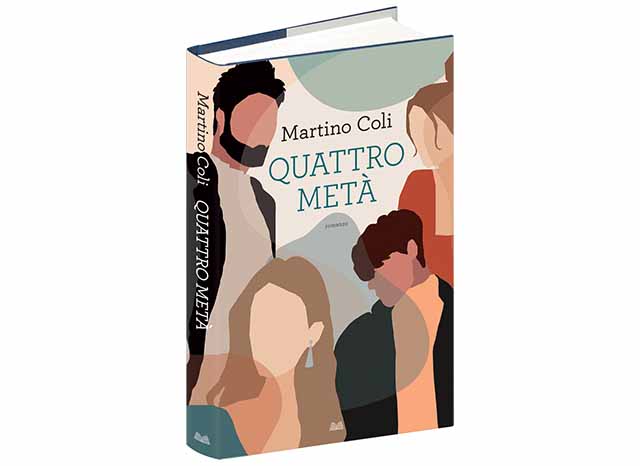


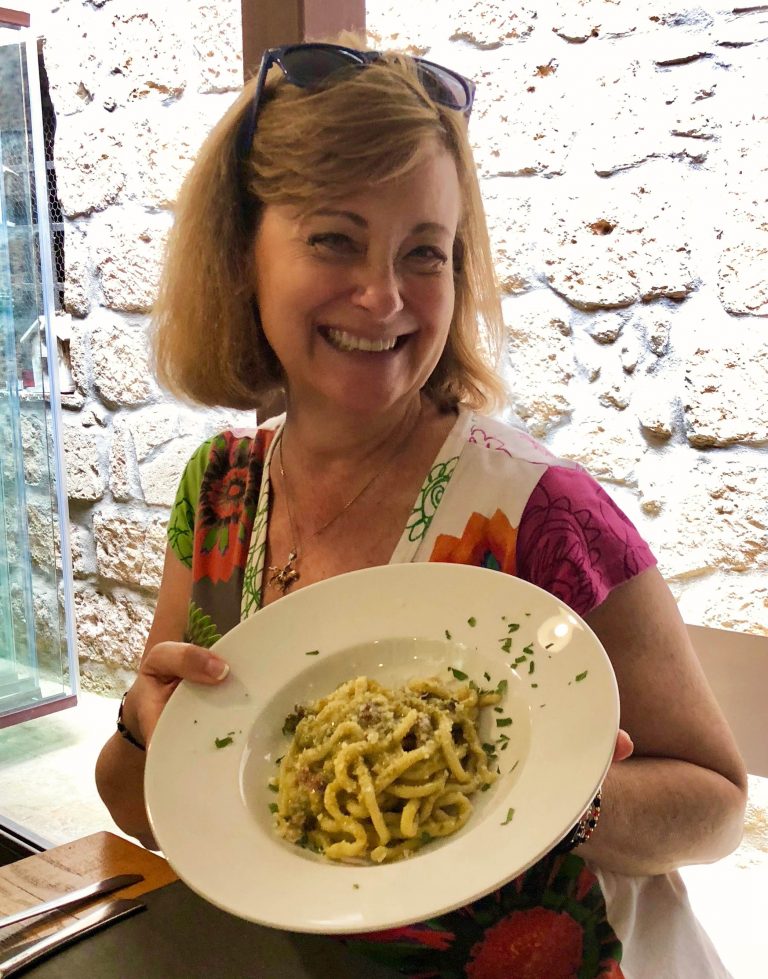







I’ve read all four. In the fourth novel, there are extensive and rich descriptions of Naples; in fact, the monuments, landmarks, neighborhoods, and other significant sites are actually woven into the narrative in an interesting way, having to do with Lila.
These are the kinds of novels that one could read with pleasure more than once, and find new layers each time through.
Thank you for this inspiring post!
Grazie Valorie! Friends have commented that the 3rd and 4th books are really their favorites. I have since picked up the next two books in the series (at Istituto in San Fran the other night they were on sale in Italian) and look forward to reading the rest of the story!
Dear Valorie,
I just bought” Storia di chi fugge e di chi resta ” in Switzerland. The only one they had in Italian. Its hard to get into it . I think I should have bought the first novel. Could you tell me which is the first and were did you but it in the States?.
I would much appreciate your answer.
Thank you,
Carla
Ciao Carla, the first book in the series is My Brilliant Friend — L’amica geniale. You can purchase books in Italian at
Libreria Pino – an on-line Italian bookstore here in the US (run by my friend in San Francisco)
https://www.libreriapino.com/
or the Italian Amazon site:
https://www.amazon.it/s/ref=nb_sb_ss_c_1_6?__mk_it_IT=%C3%85M%C3%85%C5%BD%C3%95%C3%91&url=search-alias%3Daps&field-keywords=elena+ferrante&sprefix=elena+%2Caps%2C285&crid=ZYVNIWXSNM83
Melissa,
grazie tanto per il tuo aiuto. Abito a Connecticut . Voglio vedere se non è troppo costoso.
Carla
I absolutely loved all four books! After the first, I was fascinated and obsessed with Lila and Elena and their relationship. It was probably the best interpretation of Neapolitan life. I came to understand my husband’s family (all from Naples)better and to comprehend the motives for many of their decisions. Truly insightful, thought provoking, and much to discuss if you are part of a book club. You will either fall madly in love with the novels or dislike them intensely – there is no in-between. Elena Ferrante is a genius!